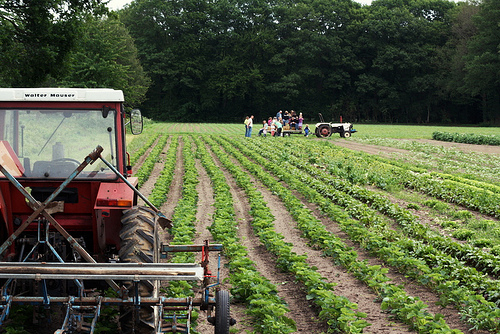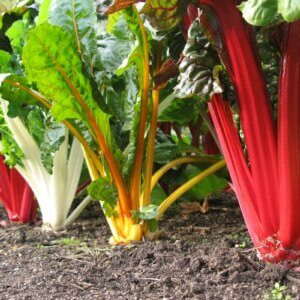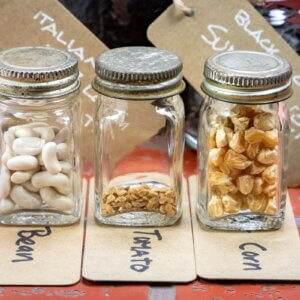I have posted a number of blogs and documents over the past two years that address some of the common myths about Organic farming.
From that, one might conclude that I am “anti-Organic,” which I am not. There are many things about Organic that I have appreciated ever since my grandfather first taught me about it in his Organic garden in the 1960s.
I appreciate them more as an agricultural scientist. I would like to address five positive features in this post, and then tomorrow I will talk about the 5 things that I see as most limiting for Organic.
1. Focus on Building Soil Quality
One often hears the argument that the world was always fed by Organic until the early 20th century. That is not at all true. Pre-industrial agriculture in the US and elsewhere was degrading the soil through tillage and depleting its nutrient stores. It only “worked” because the population was small, and there was new, “virgin land” to exploit.
The greatest contribution of the Organic movement of the early 20th century was its recognition of the importance of building soil quality in terms of organic matter content and the complex aggregate structure and biological activity that come with that. Neither pre-industrial farming or early industrial farming had that soil health focus. The importance of soil health is much more widely appreciated today, but it started with Organic.
2. The Use of Cover-Cropping and Biological Nitrogen Fixation
Cover cropping is the practice of planting a single or mixed stand to grow after an annual crop is harvested so that it grows until winter sets in and then again in the early spring before planting of the next crop. This cover crop is not harvested and serves instead as a way to “feed” the soil ecosystem and build up organic matter.
The cover crop can include legumes which have the ability to “fix” nitrogen from the air (with the help of a bacterial symbionts) and reduce the amount of nitrogen fertilizer that is needed for the following crop. This practice in not unique to Organic but is more common on Organic farms. Annual crops followed by cover crops are a reasonable imitation of the perennial prairie biome that created such fertile soils prior to cultivation.
3. Rotational Diversity
Crop rotation is a good idea for any kind of farming. It breaks pest cycles. It spreads out risk. When legumes are in the rotation it reduces nitrogen fertilizer needs. The USDA Organic rules don’t specify any specific degree of rotation, but diverse rotations have been a long tradition of Organic farming.
Conventional farmers can certainly rotate crops, but since they are using leased land and since they get no “Organic price premium,” it can be economically difficult to justify planting anything other than the 1-2 most profitable crop options.
4. Fostering Biocontrol of Pests Where Possible
Some broad spectrum insecticides used in Conventional farming kill off the other “good bugs” that could otherwise suppress the population of pest insects. Organic growers can use pesticides that qualify as “natural” and these are generally not disruptive to natural biocontrol. Some Organic growers also release biocontrol insects. Conventional growers who employ Integrated Pest Management practices (IPM) are also fostering biocontrols.
5. Opportunities for Marketing Quality Options under the Organic Brand
Because Organic has become a widely recognized consumer brand, and since customers are used to the idea of paying premium prices for Organic, it makes it easier for growers to find markets for specialty items like heirloom tomatoes, purple fingerling potatoes, certain specific sweet corn hybrids, unusual grains… This is a nice addition to the diversity of our diets.
These are five significant and good features of Organic. They are also increasingly characteristics of progressive, conventional farming.
You are invited to comment here and/or to email me at feedback.sdsavage@gmail.com
Visiting an Organic Farm Image from SuzetteSuzette’s photostream











































Although it does relate to point 5, I would also add that organic farming helps to maintain genetic diversity in our domesticated crops. The use of heirloom variety vegetables in organics farms is largely responsible for the survival of these varieties throughout the current agricultural paradigm.
The whole organic thing is interesting. As we plan out a future orchard we are looking at Chelan cherries which are a essentially a GMO variety due to the use of a virus to genetically modify Bings… Does that disqualify the cherries to be organically grown?
Another management technique we are considering in planting alfalfa in the rows. which could be hayed or silaged, and later used for feed in our small scale cattle scheme. We thought about sheep which would graze the orchard, leaving the trees alone, and fertilizing as they “go”. But this is not a USDA approved method of fertilizing tree fruit. Wild animals in the same density are exempt from the ruling because they are natural. But they eat the trees and the state gets peeved when you harvest them em mass, or at all for that matter.
I am finding that some of the organic practices are cost effective and make for good production. But when push comes to shove an organic farmer I know gave up his rating when threatened with a big crop loss. It is the 50 thousand dollar risk he was not willing to take….
very nice blog. tnx
I will add u to my blog list.
John,
If you go to the CCOF website you can see that hundreds of Organic farms withdraw from the system every year, probably because of the sort of issue your neighbor had. The alfalfa in the rows would be a good way to get nitrogen, but it might be too competitive with the trees. I use clover in my little vineyard, but I can just use Roundup to clear the vine row during the summer. An Organic grower would have to use a French Plow or a flame weeder (or hand labor on my scale). As for the animals, if the trees were full height I wouldn’t worry about splashing bacteria up to them, but if they were on dwarf rootstock I’d think that would be a risk. I don’t think the virus infected cherries would count as GMO even though they actually have “foreign DNA” in them. It would be an interesting question to ask the Organic board.
Arash,
Thanks for the compliment. I’ll be posting here once or twice a week
Organic agriculture is the key to our survival. Chemical laden conventional agriculture is harmful to the land and to us.
OrganicDude,
If Organic was the key to our survival we would be in big trouble. It is still only 0.5% of US cropland and more and more of what is being sold as Organic is imported from China with no testing.
Hello. my family has purchased 35 acres near Strasburg, CO and eventually will explore leasing some acreage to organic farmers. Do you have any contacts that would get us started — we’re looking at least 2 years out. Thank you for any ideas for organic farmers who would be interested.